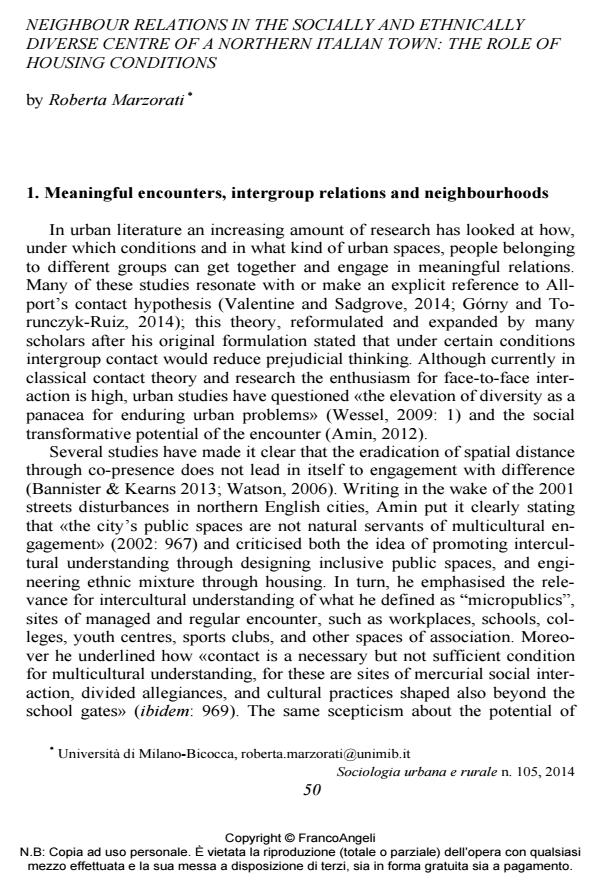Neighbour Relations In The Socially And Ethnically Diverse Centre Of A Northern Italian Town: The Role Of Housing Conditions
Journal title SOCIOLOGIA URBANA E RURALE
Author/s Roberta Marzorati
Publishing Year 2014 Issue 2014/105
Language English Pages 15 P. 50-64 File size 205 KB
DOI 10.3280/SUR2014-105004
DOI is like a bar code for intellectual property: to have more infomation
click here
Below, you can see the article first page
If you want to buy this article in PDF format, you can do it, following the instructions to buy download credits

FrancoAngeli is member of Publishers International Linking Association, Inc (PILA), a not-for-profit association which run the CrossRef service enabling links to and from online scholarly content.
L’articolo indaga le relazioni fra vicini nel centro della città di Desio, nell’area metropolitana milanese. Due situazioni abitative sono considerate per valutare in che misura la prossimità spaziale può promuovere l’interazione sociale fra gruppi socialmente e culturalmente diversi. Lo studio mostra che le diseguaglianze socio-economiche, relative all’esperienza migratoria e visibili nelle condizioni abitative e nei modi di vivere il vicinato, sono cruciali per comprendere le relazioni sociali locali.
Keywords: Neighbourhood, Diversity, Encounter, Spatial Proximity, Housing, Migration
- La segregazione urbana: una riflessione tra Francia e Italia Roberta Marzorati, in SOCIOLOGIA URBANA E RURALE 116/2018 pp.131
DOI: 10.3280/SUR2018-116009
Roberta Marzorati, Neighbour Relations In The Socially And Ethnically Diverse Centre Of A Northern Italian Town: The Role Of Housing Conditions in "SOCIOLOGIA URBANA E RURALE" 105/2014, pp 50-64, DOI: 10.3280/SUR2014-105004